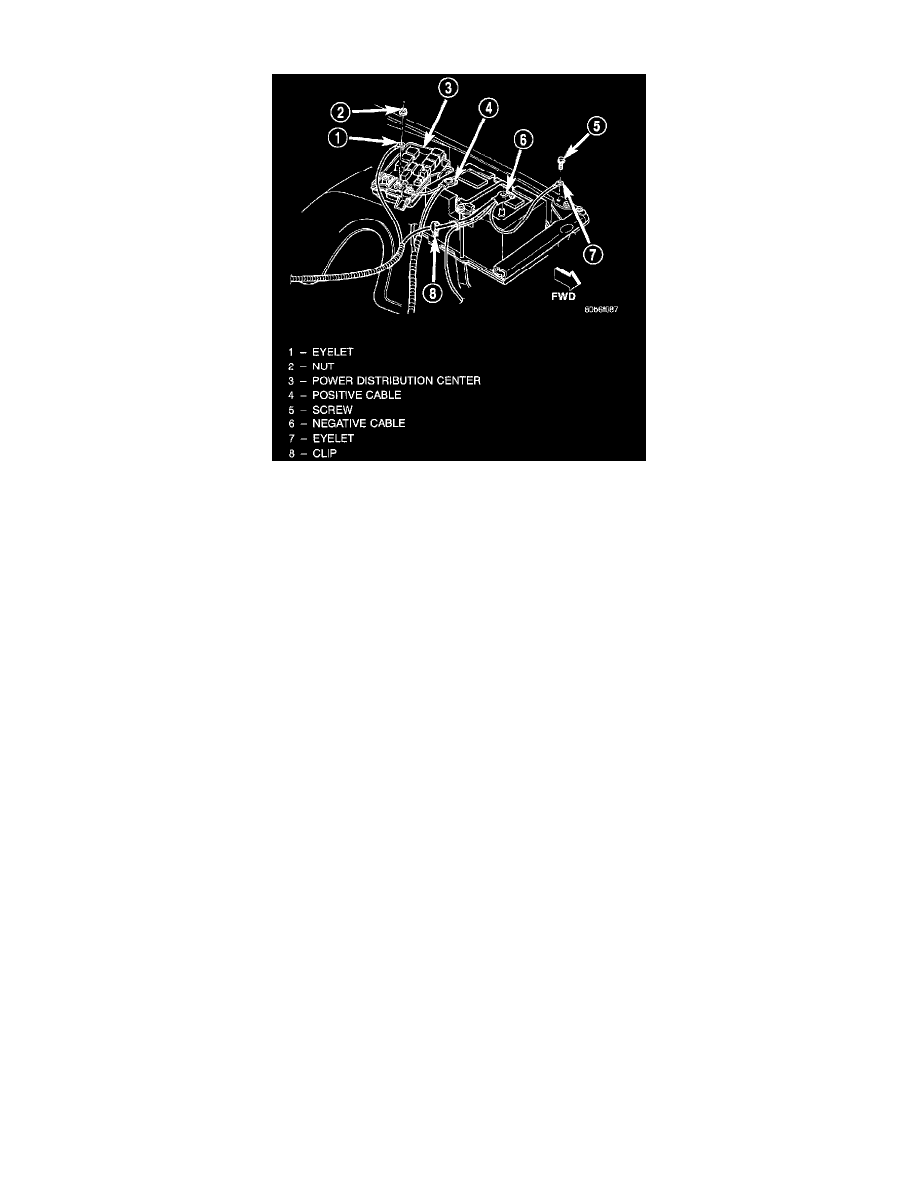RAM 2500 Truck 2WD V8-5.2L VIN Y (2000)

Battery Cable: Description and Operation
Battery Cables - Typical
The battery cables are large gauge, stranded copper wires sheathed within a heavy plastic or synthetic rubber insulating jacket. The wire used in the
battery cables combines excellent flexibility and reliability with high electrical current carrying capacity.
The battery cables cannot be repaired and, if damaged or faulty they must be replaced. Both the battery positive and negative cables are available for
service replacement only as a unit with the battery positive cable wire harness or the battery negative cable wire harness, which may include portions of
the wiring circuits for the generator and other components on some models.
Gasoline engine models feature a stamped brass clamping type female battery terminal crimped onto one end of the battery cable wire and then
solder-dipped. A square headed pinch-bolt and hex nut are installed at the open end of the female battery terminal clamp. The battery positive cable also
includes a red molded rubber protective cover for the female battery terminal clamp. Large eyelet type terminals are crimped onto the opposite end of the
battery cable wire and then solder-dipped. The battery positive cable wires have a red insulating jacket to provide visual identification and feature a
larger female battery terminal clamp to allow connection to the larger battery positive terminal post. The battery negative cable wires have a black
insulating jacket and a smaller female battery terminal clamp.
The battery positive cable terminal clamp is crimped onto the ends of two wires. One wire has an eyelet terminal that connects the battery positive cable
to the B(+) terminal stud of the Power Distribution Center (PDC), and the other wire has an eyelet terminal that connects the battery positive cable to the
B(+) terminal stud of the engine starter motor solenoid. The battery negative cable terminal clamp is also crimped onto the ends of two wires. One wire
has an eyelet terminal that connects the battery negative cable to the vehicle powertrain through a stud on the front of the left engine cylinder head. The
other wire has an eyelet terminal that connects the battery negative cable to the vehicle body through a ground screw on the left front fender inner shield,
just ahead of the battery. An additional ground wire with two eyelet terminals is used to provide ground to the vehicle frame. One eyelet terminal of this
ground wire is installed under the head of the battery negative cable terminal clamp pinch-bolt, and the other eyelet terminal is secured with a ground
screw to the outer surface of the left frame rail, below the battery.
